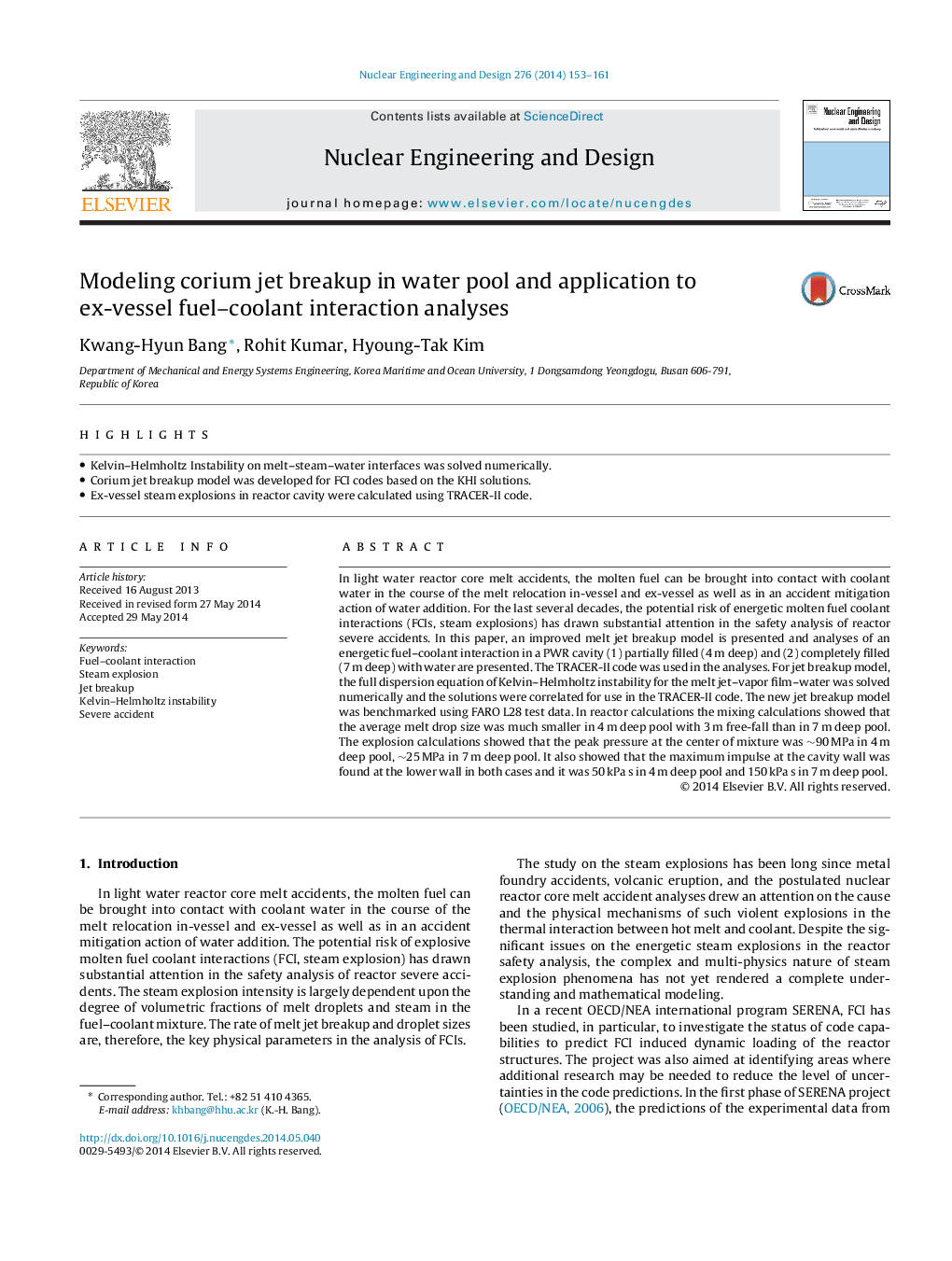| کد مقاله | کد نشریه | سال انتشار | مقاله انگلیسی | نسخه تمام متن |
|---|---|---|---|---|
| 296307 | 511721 | 2014 | 9 صفحه PDF | دانلود رایگان |
• Kelvin–Helmholtz Instability on melt–steam–water interfaces was solved numerically.
• Corium jet breakup model was developed for FCI codes based on the KHI solutions.
• Ex-vessel steam explosions in reactor cavity were calculated using TRACER-II code.
In light water reactor core melt accidents, the molten fuel can be brought into contact with coolant water in the course of the melt relocation in-vessel and ex-vessel as well as in an accident mitigation action of water addition. For the last several decades, the potential risk of energetic molten fuel coolant interactions (FCIs, steam explosions) has drawn substantial attention in the safety analysis of reactor severe accidents. In this paper, an improved melt jet breakup model is presented and analyses of an energetic fuel–coolant interaction in a PWR cavity (1) partially filled (4 m deep) and (2) completely filled (7 m deep) with water are presented. The TRACER-II code was used in the analyses. For jet breakup model, the full dispersion equation of Kelvin–Helmholtz instability for the melt jet–vapor film–water was solved numerically and the solutions were correlated for use in the TRACER-II code. The new jet breakup model was benchmarked using FARO L28 test data. In reactor calculations the mixing calculations showed that the average melt drop size was much smaller in 4 m deep pool with 3 m free-fall than in 7 m deep pool. The explosion calculations showed that the peak pressure at the center of mixture was ∼90 MPa in 4 m deep pool, ∼25 MPa in 7 m deep pool. It also showed that the maximum impulse at the cavity wall was found at the lower wall in both cases and it was 50 kPa s in 4 m deep pool and 150 kPa s in 7 m deep pool.
Journal: Nuclear Engineering and Design - Volume 276, September 2014, Pages 153–161
